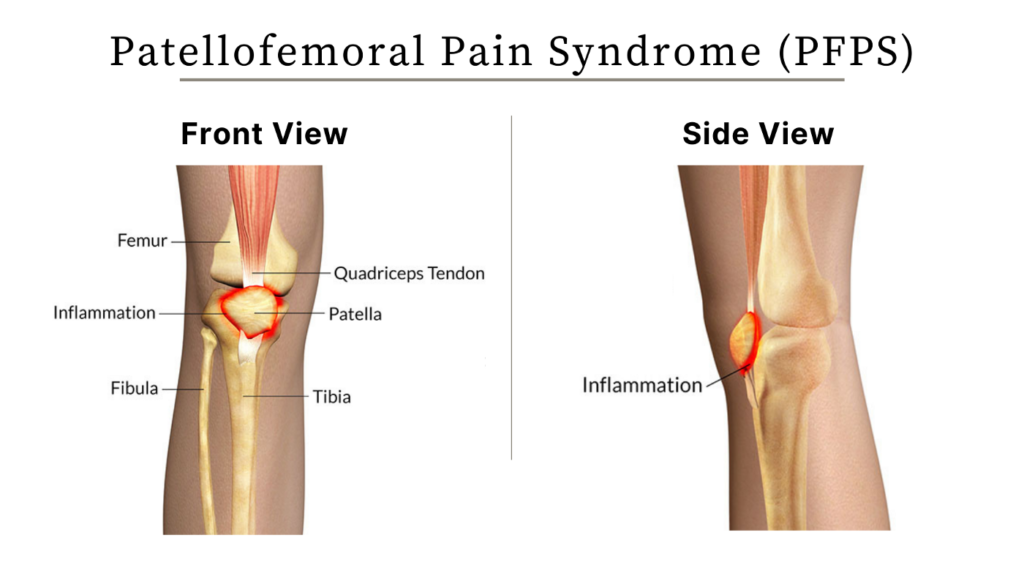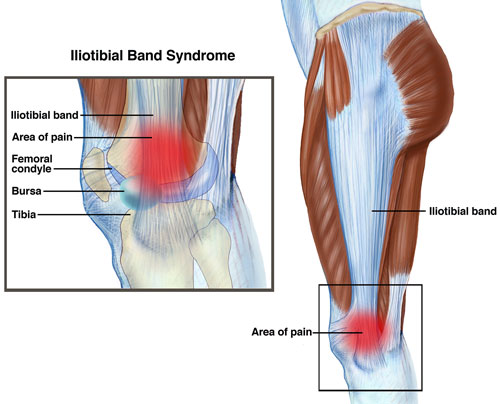The shoulder is a complex joint that allows for a wide range of motion, but it is also susceptible to a variety of injuries and conditions. Physical therapy can be an effective treatment option for many shoulder ailments, helping to alleviate pain and restore mobility. Here are five specific shoulder conditions that OSR Physical Therapy treats, along with their treatment options:
Rotator Cuff Tear:
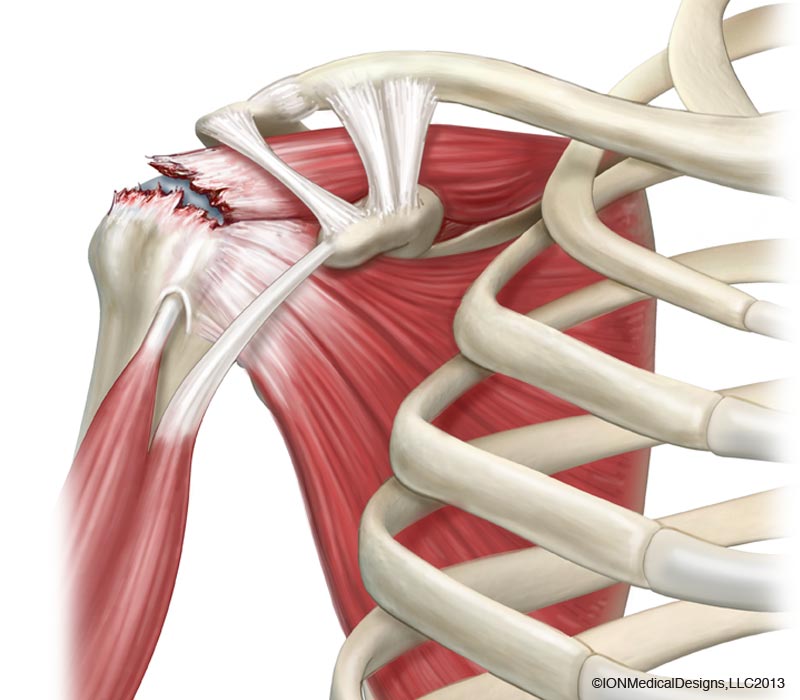
The rotator cuff is a group of muscles and tendons that support the shoulder joint. A rotator cuff tear can occur as a result of a sudden injury or from repetitive use. Rotator cuff tears can be a common source of shoulder pain and can limit your ability to perform daily activities. Physical therapy can help to reduce pain, improve shoulder strength and mobility, and prevent further injury. Here are some specific treatments that may be part of a physical therapy program for a rotator cuff tear:
- Range of motion exercises: Your physical therapist will work with you to perform exercises that will help to restore your shoulder’s full range of motion.
- Strengthening exercises: Strengthening exercises can help to improve the stability of the shoulder joint and reduce the strain on the rotator cuff. Your physical therapist may recommend exercises such as shoulder blade (scapular) strengthening exercises, rotator cuff strengthening exercises, and shoulder abduction exercises.
- Modalities: Your physical therapist may use modalities such as heat or cold therapy, ultrasound, or electrical stimulation to reduce pain and inflammation.
- Manual therapy: Manual therapy techniques such as soft tissue massage, joint mobilization, or manual stretching can be used to help restore range of motion and reduce pain.
- Posture and body mechanics education: Your physical therapist can provide education on proper posture and body mechanics to help reduce strain on your shoulder and prevent further injury.
- Activity modification: Your physical therapist may recommend modifications to your daily activities to avoid further strain on the shoulder.
Frozen Shoulder:
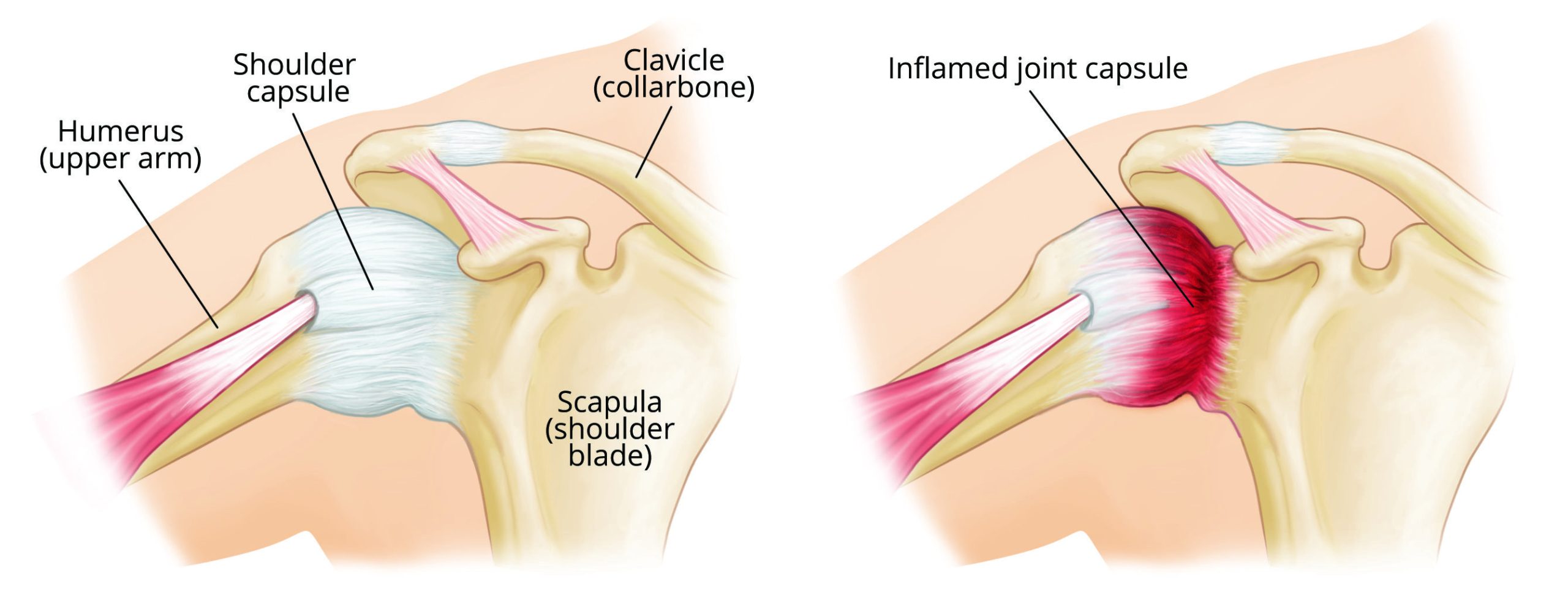
Frozen shoulder, also known as adhesive capsulitis, is a condition that causes pain and stiffness in the shoulder joint. Physical therapy can be an effective treatment for frozen shoulder and can help to improve range of motion, reduce pain, and restore shoulder function. Here are some specific treatments that may be part of a physical therapy program for frozen shoulder:
- Range of motion exercises: Your physical therapist will work with you to perform exercises that will help to restore your shoulder’s range of motion. Gentle stretching exercises and range of motion exercises can help to loosen the shoulder joint and reduce stiffness.
- Strengthening exercises: Strengthening exercises can help to improve the stability of the shoulder joint and reduce the strain on the shoulder. Your physical therapist may recommend exercises such as shoulder blade (scapular) strengthening exercises, rotator cuff strengthening exercises, and shoulder abduction exercises.
- Modalities: Your physical therapist may use modalities such as heat or cold therapy, ultrasound, or electrical stimulation to reduce pain and inflammation.
- Manual therapy: Manual therapy techniques such as soft tissue massage, joint mobilization, or manual stretching can be used to help restore range of motion and reduce pain.
- Posture and body mechanics education: Your physical therapist can provide education on proper posture and body mechanics to help reduce strain on your shoulder and prevent further injury.
- Activity modification: Your physical therapist may recommend modifications to your daily activities to avoid further strain on the shoulder.
- Home exercise program: Your physical therapist will likely provide you with a home exercise program to continue your rehabilitation and prevent further stiffness.
Bursitis:
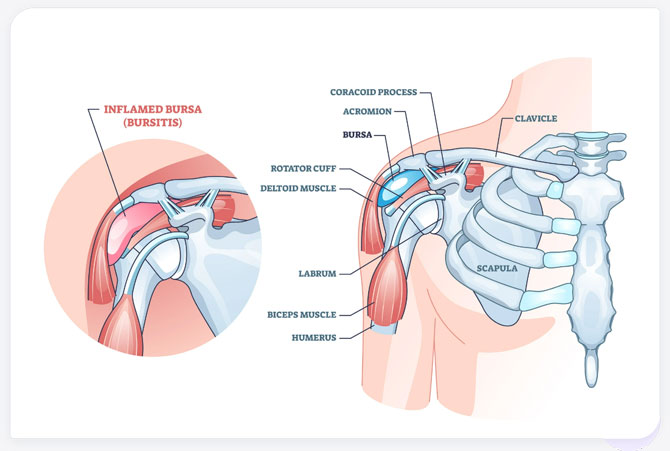
Shoulder bursitis is a condition that occurs when the bursa, a small fluid-filled sac, becomes inflamed and irritated. Physical therapy can be an effective treatment for shoulder bursitis and can help to reduce pain, inflammation, and restore shoulder function. Here are some specific treatments that may be part of a physical therapy program for shoulder bursitis:
- Rest and activity modification: Your physical therapist may recommend rest and modification of activities that put strain on the shoulder joint to reduce inflammation and pain.
- Modalities: Your physical therapist may use modalities such as ice or heat therapy, ultrasound, or electrical stimulation to reduce pain and inflammation.
- Range of motion exercises: Your physical therapist will work with you to perform exercises that will help to restore your shoulder’s range of motion. Gentle stretching exercises and range of motion exercises can help to loosen the shoulder joint and reduce stiffness.
- Strengthening exercises: Strengthening exercises can help to improve the stability of the shoulder joint and reduce the strain on the bursa. Your physical therapist may recommend exercises such as shoulder blade (scapular) strengthening exercises, rotator cuff strengthening exercises, and shoulder abduction exercises.
- Manual therapy: Manual therapy techniques such as soft tissue massage, joint mobilization, or manual stretching can be used to help reduce pain and improve range of motion.
- Posture and body mechanics education: Your physical therapist can provide education on proper posture and body mechanics to help reduce strain on your shoulder and prevent further injury.
- Home exercise program: Your physical therapist will likely provide you with a home exercise program to continue your rehabilitation and prevent further stiffness.
Labral Tear:
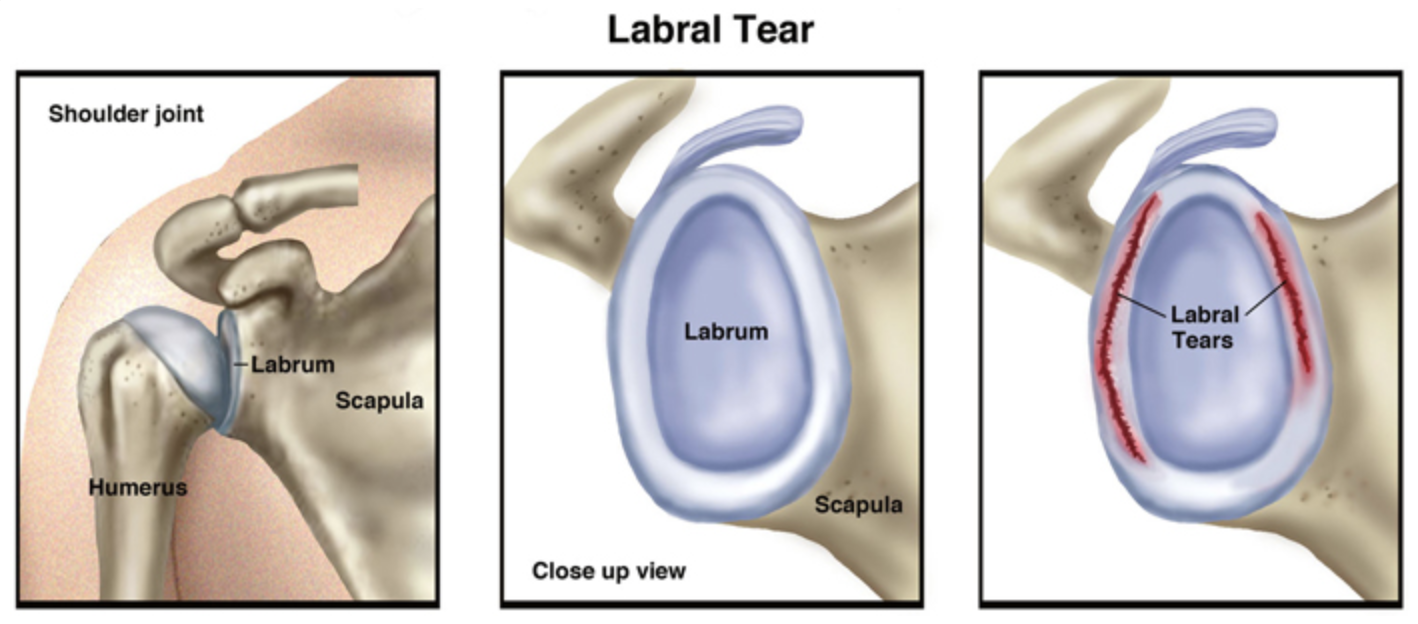
A shoulder labral tear occurs when the ring of cartilage surrounding the shoulder joint, known as the labrum, becomes damaged. Physical therapy can be an effective treatment for a shoulder labral tear and can help to reduce pain, inflammation, and restore shoulder function. Here are some specific treatments that may be part of a physical therapy program for a shoulder labral tear:
- Rest and activity modification: Your physical therapist may recommend rest and modification of activities that put strain on the shoulder joint to reduce inflammation and pain.
- Modalities: Your physical therapist may use modalities such as ice or heat therapy, ultrasound, or electrical stimulation to reduce pain and inflammation.
- Range of motion exercises: Your physical therapist will work with you to perform exercises that will help to restore your shoulder’s range of motion. Gentle stretching exercises and range of motion exercises can help to loosen the shoulder joint and reduce stiffness.
- Strengthening exercises: Strengthening exercises can help to improve the stability of the shoulder joint and reduce the strain on the labrum. Your physical therapist may recommend exercises such as shoulder blade (scapular) strengthening exercises, rotator cuff strengthening exercises, and shoulder abduction exercises.
- Manual therapy: Manual therapy techniques such as soft tissue massage, joint mobilization, or manual stretching can be used to help reduce pain and improve range of motion.
- Posture and body mechanics education: Your physical therapist can provide education on proper posture and body mechanics to help reduce strain on your shoulder and prevent further injury.
- Surgery: In some cases, surgery may be necessary to repair the damaged labrum. Your physical therapist will work with you before and after surgery to help prepare you for the procedure and help with your recovery.
Shoulder Impingement:
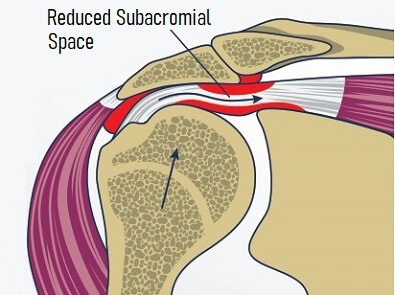
Shoulder impingement occurs when the rotator cuff tendons and/or bursa become compressed or pinched between the bones of the shoulder joint. Physical therapy can be an effective treatment for shoulder impingement and can help to reduce pain, inflammation, and restore shoulder function. Here are some specific treatments that may be part of a physical therapy program for shoulder impingement:
- Rest and activity modification: Your physical therapist may recommend rest and modification of activities that put strain on the shoulder joint to reduce inflammation and pain.
- Modalities: Your physical therapist may use modalities such as ice or heat therapy, ultrasound, or electrical stimulation to reduce pain and inflammation.
- Range of motion exercises: Your physical therapist will work with you to perform exercises that will help to restore your shoulder’s range of motion. Gentle stretching exercises and range of motion exercises can help to loosen the shoulder joint and reduce stiffness.
- Strengthening exercises: Strengthening exercises can help to improve the stability of the shoulder joint and reduce the strain on the rotator cuff tendons and bursa. Your physical therapist may recommend exercises such as rotator cuff strengthening exercises, shoulder blade (scapular) strengthening exercises, and shoulder abduction exercises.
- Posture and body mechanics education: Your physical therapist can provide education on proper posture and body mechanics to help reduce strain on your shoulder and prevent further injury.
- Manual therapy: Manual therapy techniques such as soft tissue massage, joint mobilization, or manual stretching can be used to help reduce pain and improve range of motion.
- Activity-specific training: Your physical therapist can work with you to develop an individualized exercise program that is specific to your activities or sport. This can help to improve your performance and reduce the risk of further injury.
In addition to these specific conditions, physical therapy can also be effective in treating general shoulder pain and stiffness. Treatment may include exercises to improve range of motion and strength, manual therapy, and modalities such as heat or ice.
At OSR Physical Therapy, our experienced physical therapists work with patients to develop individualized treatment plans based on their specific shoulder condition and needs. Contact us to schedule an evaluation and find out how physical therapy can help you recover from a shoulder injury or condition.







